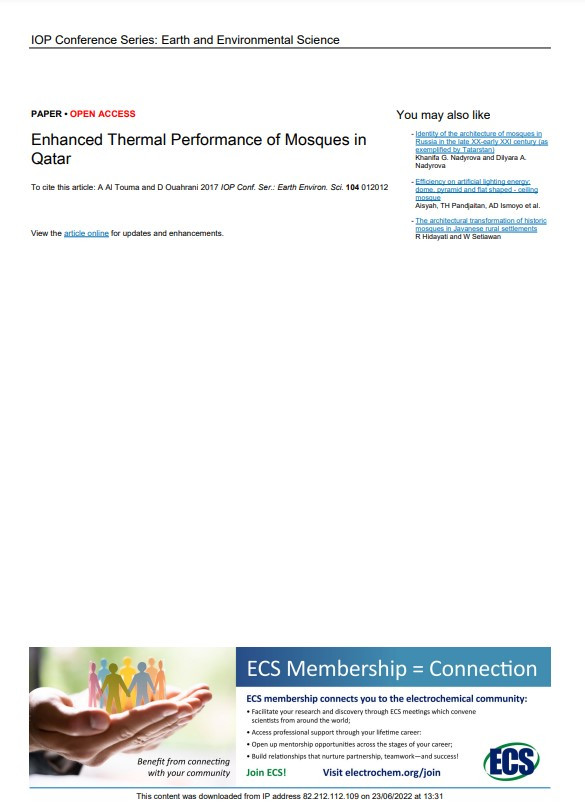
Qatar has an abundance of mosques that significantly contribute to the increasing energy consumption in the country. Little attention has been given to providing mitigation methods that limit the energy demands of mosques without violating the worshippers’ thermal comfort. Most of these researches dealt with enhancing the mosque envelope through the addition of insulation layers. Since most mosque walls in Qatar are mostly already insulated, this study proposes the installation of shading on the mosque roof that is anticipated to yield similar energy savings in comparison with insulated roofs. An actual mosque in Qatar, which is a combination of six different spaces consisting of men and women’s prayer rooms, ablutions and toilets, was simulated and yielded a total annual energy demand of 619.55 kWh/m2. The mosque, whose walls are already insulated, yielded 9.1% energy savings when an insulation layer was added to its roof whereas it produced 6.2% energy savings when a shading layer was added above this roof. As the reconstruction of the roof envelope is practically unrealistic in existing mosques, the addition of shading to the roof was found to produce comparable energy savings. Lastly, it was found that new mosques with thin-roof insulation and shading tend to be more energy-efficient than those with thick-roof insulation.
Al Touma, Alber, and Djamel Ouahrani. “Enhanced thermal performance of mosques in Qatar.” In IOP Conference Series: Earth and Environmental Science, vol. 104, no. 1, p. 012012. IOP Publishing, 2017.
I agree to the terms outlined below:
You agree to upload and assign Mosqpedia Database the rights to use the content worldwide and in perpetuity across all current and future media platforms. Mosqpedia Database may edit, copy, adapt and translate your contribution.
The content will be distributed under the Creative Commons Attribution-Deed – Attribution-NonCommercial-NoDerivatives 4.0 International – Creative Commons
All data will be stored in line with data protection regulations.